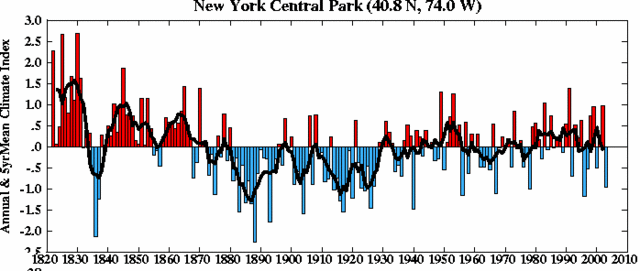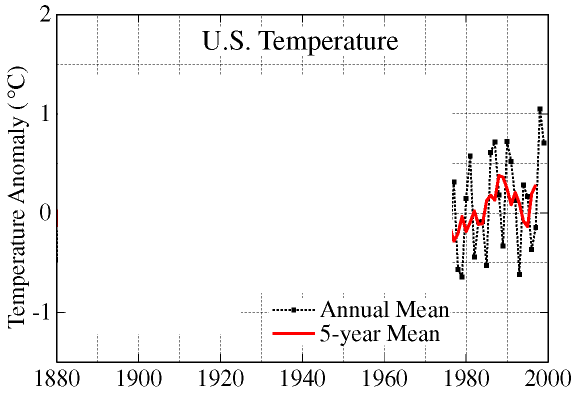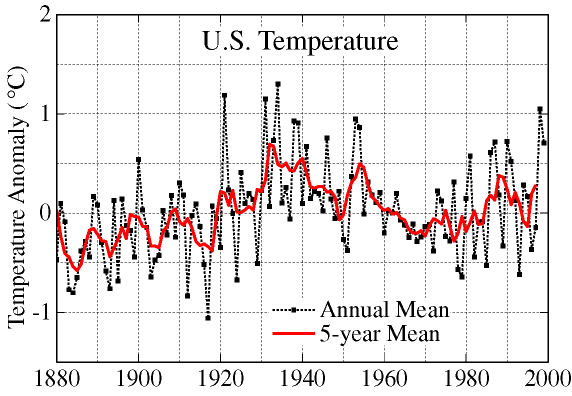What Climate Change Intevenionists Need to Prove
Advocates for radical government intervention to halt climate change claim that they have "proven" the case for limitations on CO2 emissions beyond the doubt of anyone except contemptible corporate greed-hounds. As Todd Zwycki quotes Ellen Goodman:
The climate is equally apparent in the struggle over what the Bush
administration calls "climate change" "” and everyone else calls global warming.
The only way to justify doing nothing about global warming now is to
deliberately muddle the science. It's not an accident that Philip Cooney,
the White House official caught editing reports on greenhouse gases, left for
Exxon Mobil, which has indeed funded doubts.
I have written on the burden of proof that is needed to justify Kyoto-like interventions a number of times, most recently here. This is what I think has been "proven" sufficiently well.
- Proven: Man-made CO2 has increased the concentration of CO2 in the atmosphere (best evidence from ice cores and samplings in Hawaii)
- Proven: Temperatures in the world have risen since 1900. (though perhaps less than typicaly reported due to under-correction for urban heat-island effects).
- Proven: The temperature rise in the first half of the 1900's was not man-made, having occured before substantial man-made CO2 production, and therefore is attributable to some other (disputed and/or unknown) effect.
Here is what is still in doubt, with no consensus:
- In Dispute: How much of the world temperature rise since 1950 was due to man-made CO2 output? Some unknown phenomena caused a pre-1950 rise, leaving open the question of how much this other phenomena raised temperatures in the latter half of the 1900's and how much was due to man-made CO2.
- In Dispute: How much will the world's temperature rise in the future due to man-made CO2? Climate is a complex animal, and no honest thinking climate scientist believes they have the right model yet, particularly since none of the most-used models explains history very well. Also, beyond climate, the economic models that drive CO2 levels in the climate model are hugely flawed, causing the models to way over-estimate man-made CO2 production.
- In Dispute: What are the positives and negatives of global warming for humans? The negatives are dealt with all too casually, in the sort of unproven scare story day-after-tomorrow unscientific approach that makes good NY Times Sunday Edition reading but does little to introduce any facts. The positives are never, ever mentioned. "Disinterested" climate scientists never mention that some parts of the world will benefit, in terms of longer growing seasons, or that most of the warming will occur in winter nights in the coldest regions, where warming would be welcome. Its almost as if they weren't disinterested and had an interest in the answer coming out a certain way.
Wait, we are not done yet. There is one critical questions that is never even addressed by global warming advocates:
- Not Even Addressed: How do the costs of limiting CO2 emissions, including decreased economic growth and increased poverty, stand up against the dangers? No one has done a good study of this, though people like Bjorn Lomburg have argued that the cost-benefit is much worse than solving some of the world's other problems.
Basically, the philosophy of environmentalists is that if man changed the world, its worth any cost to reverse it. Sorry, but this is not sufficient evidence to trash the world economy with new taxes and output restrictions.
Todd Zwycki, in the article linked above, has a nice analysis:
So the real question to ask here is whether on net, the costs of doing
something about global climate change outweigh the benefits of doing it. This is
the same question we ask (or should ask) about every other intervention into
nature--should we kill the parasites in water so that we can drink it, should we
drain a mosquito-infested swamp to eliminate the risk of malaria, should we
provide a vaccine to kill naturally-occurring smallpox. To imply that if the
science shows we are changing the climate we must do something about it is as
wrongheaded as it would be to say that if we are not contributing to global
warming we should not do anything about it.On the question of whether global warming would be a net benefit or detriment
to the planet, the evidence I have seen to date suggests that it is
inconclusive. There will be impacts on crop yields, growing locations, forests,
energy consumption, etc., that cut in many different directions. The question of
whether the warming will occur equally throughout the world, or whether it will
occur more strongly in the coldest parts of the world appears to also be
unsettled, and has powerful normative implications for policy. To get bogged
down in the science, and especially in causal questions, seems to me to be
largely beside the point.



